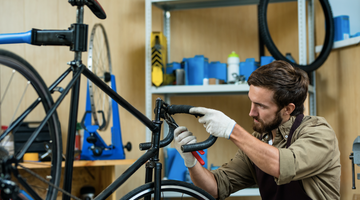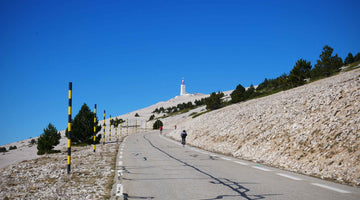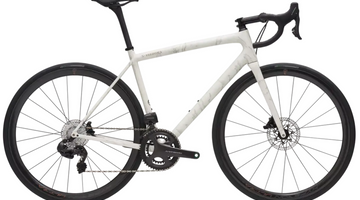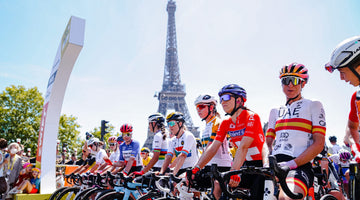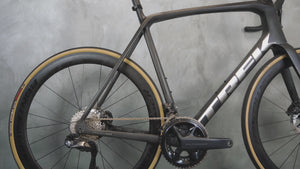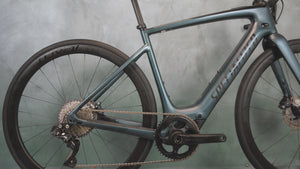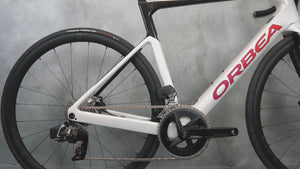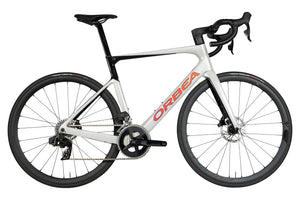How to choose the best power meter? A buyer’s guide
Published on Thursday 6 April 2023
Many people ask themselves if they need a power meter, but do you? In this guide we’ll run through the different types of power meters and their pros and cons. Whether you want to perform at your highest level or just get fit there is always room to make use of power to help you achieve your goals, especially when combined with a heart rate monitor!
Taking the cadence and torque you produce by pedalling and multiplying them together, power meters can help you manage efforts, work to zones and increase your pedalling efficiency. All this with a little structured training can see you make great improvements to your fitness, or just help you get King or queen of the mountain on your local Strava segment!
Power meters come in all shapes and sizes but its important to have a compatible head unit or bike computer which it can connect with. Most power meters come with Bluetooth or Ant+ but check everything is compatible before purchasing. Often power meters come with cadence bult in which is a great bonus, some may require a magnet which usually attaches to the frame of your bike. If you are a mountain bike rider don’t worry, there are specific mountain bike power meters, if you looking to get into mountain biking check out this article on buying a second hand MTB.
Another important thing to note is single sided power meters which are usually cheaper as they don’t provide as much information pedalling efficiency, but this isn’t a problem unless you’re searching for perfection. All power meters can also be used on Zwift meaning you wouldn’t need to buy a smart Trainer!

Which power meter is best for you?
Whether you are on a budget or looking for the pure precision there is a power meter for you, lets take a deep dive into the different types. (At the bottom is a chart for quicker reading)
Power meter pedals:
Available for Look, Shimano, Wahoo and SPD cleat systems, they can be a great solution if you own multiples bikes, having dedicated power meters on each bike is a bit of a luxury so this may be a great solution for people with a midrange budget. Changing the battery is quite easy, some require charging whereas others need to have the batteries replaces. The price point starts around 400 euros and tops out around 1,300 euros making it quite a reasonable option, however the cheaper options only have single sided power. If you do a lot of Km’s they may also wear out like all other pedals (however, with the Favero pedals it’s possible to replace the pedal bodies) and be careful around corners as this can be an easy way to damage them. While racing a crit in Lorient (Bretagne, France) I saw the battery casing of someone’s Garmin Vector peddles after a sharp corner! Some peddles include Favero Assioma single or double sided (400 – 655 euros), Garmin Vector single or doble sided (550 – 813 euros), Wahoo single or double sided (650 – 1000 euros). SRM also make peddles which come in at around 1300 euros and all of which excluding Wahoo are available in the Shimono and Look cleat systems. Garmin, Favero Assioma and SRM also have SPD options for mountain bike and gravel bikes. If you’re interested on going quick off road (who isn’t?) have a read about Electric gravel bikes by clicking this link!

Power meter cranks:
This option is great for someone with a lower budget, starting around 215 euros for single sided power and capping out at 1200 euros. These are generally slightly more accurate than pedals but not quite as accurate as the spiders. Batteries are either replaced or the power meter can be recharged. Generally, they don’t wear out easily which is good if you are riding often. They can be swapped between bikes but not as easily as pedals. Lastly, they are available for Shimano, SRAM and Campagnolo as well as mountain or gravel bikes. One downside is the durability, check out reviews before buying as I have known a lot of people with issues in the past. Here are some popular options; Stages power Shimano 105 single sided (290 euros), 4iiii left side Shimano Ultegra R8100 (390 euros), Rotor Inpower D3 (453 euros).

Power meter spiders:
Looking for slightly more accuracy? This might be a good option for you. Used by more pros than peddle based power meters these can deliver accuracy within +/- 1.5%. Single and duel sided power is also available. Unlike pedals these don’t wear out as you can often change the chainrings which the spider is attached too. Unfortunately, this is not the case with the SRAM RED AXS power meter. If you’re a SRAM lover check out this beautiful Pinarello Dogma F on our website. Like the pedals they can be recharged or will need the batteries replaced. If you want power on multiple bikes, it’s possible to swap them however it is more complicated than the pedals and is not convenient. The entry level power meter costs around 230 euros and top models can cost up to 2800 euros. It’s very important to make sure these are compatible with either your cranks or bottom bracket! Furthermore, not all come with cranks or chainrings so make sure to double check before purchase.
Some examples are Quarq SRAM Rival AXS Dub (230 euros), Quarq SRAM Dfour (540 euros), FSA PowerBox Carbon or Alloy (525 – 860), Shimano Ultegra R8100 (1080 euros), SRM Origin Road Carbon (1750 euros), if you’re looking at a top of the range SRM power meter you might also be interested in a super quick all round race bike, the Specialised or S-works Tarmac. Click here to read our guide to the Tarmac range.

Power meter comparison chart
We have decided to judge each type of power meter from 1-5, 5 being the best and 1 being the worst, here are the four factors we are judging.
- Price – This is maybe the most important factor for most people, it’s important to buy a power meter which you can trust but also get the most for your money!
- Ease of use – This is most important if you have 2 bikes for example Triathletes may want power on both their road and triathlon bike.
- Durability/Risk of damage – Crashing with your new power meter would be anyone’s worst nightmare, especially if there is a high risk of it being damaged. Also when spending over 200 euros you want it to last as long as possible.
- Accuracy – Finally, if every watt counts and you want to train to your maximum maybe you want to consider finding the most consistent and accurate power meter.
|
|
Pedals |
Cranks |
Spider |
|
Price |
4/5 |
5/5 |
3/5 |
|
Ease of use/Set up |
5/5 |
3/5 |
2/5 |
|
Durability/Risk of damage |
2/5 |
4/5 |
5/5 |
|
Accuracy |
3/5 |
4/5 |
5/5 |
|
Overall |
14/20 |
16/20 |
15/20 |
It’s important to remember the overall score doesn’t reflect what’s best for you. Finding a power meter which suits your needs is crucial, we are aiming to give you a better understanding of all available options.

Popular power meter brands and where to buy them: You can find power meters online very easily but also try your local bike shop. Most shops are Shimano or SRAM dealers so that gives you a lot of options as well as Garmin or wahoo, it’s always good to support your local bike shop and they would be able to check the power meter is compatible with your bike and fit it for you. Also have a look for second hand power meters as its possible to get some brands like SRM refurbished which may work out to be cheaper than other options.
Here is a list of most of the popular brands:
-Stages
- Shimano
- 4iii
- Quarq
- SRM
- Pioneer
- Infocrank
- Favero Assioma
- Wahoo
- Garmin
- FSA
- Rotor
During the time I have been riding I have had the pleasure to ride with a Power 2 max wheel hub which is no longer on the market hence we have not mentioned hub-based power meters, a Quarq, Garmin pedals, Shimano and SRM. Over the years I have also ridden with a lot of different people and talked about their experiences with power meters. Unfortunately not all brands have worked perfectly, I had to return my Garmin pedals after continuous problems, as well as a few people I know. I have heard that the durability of stages is not very consistent, especially in bad weather conditions. However, I have never used them myself. On the other hand, my Quarq worked well only having a few problems along the way. The SRM I used was amazing, never experiencing any problems and the same applies to my current Shimano Ultegra R8100 power meter which I have been riding with for the last 3 months

Conclusion
If you’re ready to take your riding to the next level now you know what to look out for and should feel more confident when buying a power meter, there are a lot of options, it’s a bit like buying a bike! And if you’re looking at adding a new bike to your collection, or just looking at getting your first bike, buying a used bike is always a great option, here's a guide to buying a used bike. However, I’m guessing if you are reading this article, you already have a passion for riding your bike and want to take your training or fitness to the next level. Unless you have an endless budget, I think its most important to work out what you want to achieve with your power meter. What ever your riding style a power meter will always serve a purpose and can benefit everyone! If you enjoyed this article and like understanding every component of a bike, check out this article on MTB forks.






